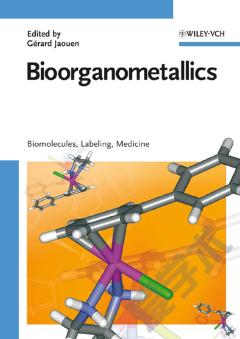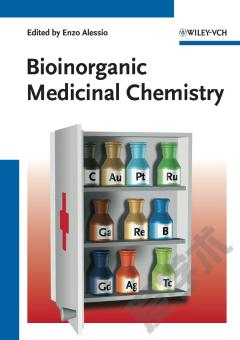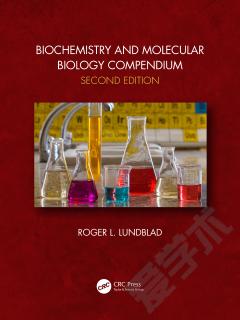Bioorganometallics —— Biomolecules, Labeling, Medicine
----- 生物有机金属物质:生物分子、标记、医学
Preface. List of Contributors. 1 A Novel Field of Research: Bioorganometallic Chemistry, Origins, and Founding Principles (Gerard Jaouen, Wolfgang Beck, and Michael J. McGlinchey). 1.1 Introduction. 1.2 Organometallics and Therapy. 1.3 Toxicology and the Environment. 1.4 Bioanalytical Methods Based on Special Properties of Organometallic Complexes. 1.5 Naturally-occurring Organometallics and Synthetic Models. 1.6 Organometallic Chemistry and Aqueous Solvents. 1.7 Conclusions. 2 Ruthenium Arene Anticancer Complexes (Michael Melchart and Peter J. Sadler). 2.1 Introduction. 2.2 Metal-based Anticancer Complexes. 2.3 Chemistry of Ru Arenes. 2.4 Biological Activity. 2.5 Mechanism of Action. 2.6 Conclusions. 3 Organometallics Targeted to Specific Biological Sites: the Development of New Therapies (Gerard Jaouen, Siden Top, and Anne Vessieres). 3.1 Introduction. 3.2 Overview of Previous Developments. 3.3 Metal Complex SERMs (Selective Estrogen Receptor Modulators). 3.4 The Alkyne Cobalt Carbonyl Complexes. 3.5 Ferroquine, a New Weapon in the Fight Against Malaria: the Archetypical Bioorganometallic Approach. 3.6 Other Examples of Organometallics Complexes Tested for their Biological Activities. 3.7 Conclusion. 4 Radiopharmaceuticals (Roger Alberto). 4.1 What are Radiopharmaceuticals? 4.2 Organometallic Aquo-ions. 4.3 The Prototype [99Tc(OH2)3(CO)3]+, Synthesis and Properties. 4.4 Combining [99Tc(OH2)3(CO)3]+ with Targeting Vectors. 4.5 Perspectives. 5 Conjugates of Peptides and PNA with Organometallic Complexes: Syntheses and Applications (Nils Metzler-Nolte). 5.1 Introduction. 5.2 Conjugates of Organometallics with Small Peptides. 5.3 Conjugates of Organometallics with Natural Peptides. 5.4 Conjugates of Organometallics with PNA. 5.5 Applications. 6 Labeling of Proteins with Organometallic Complexes: Strategies and Applications (Michele Salmain). 6.1 Introduction. 6.2 Redox Probes. 6.3 Luminescent Probes. 6.4 Heavy Metal Probes. 6.5 Metallo-carbonyl Probes for Infrared Spectroscopy. 6.6 Conclusions and Outlook. 7 Organometallic Bioprobes (G. Richard Stephenson). 7.1 Introduction. 7.2 The Definition of the Terms Bioprobes and Molecular Bioprobes. 7.3 Response Strategies for the Read-out of Information. 7.4 Organometallic Components for Organometallic Bioprobes - Opening up the Advantages of IR-based Read-out Methods. 7.5 Selectivity of Responses in IR-based Read-out Methods. 7.6 Examples of Organometalcarbonyl Bioprobe Structures. 7.7 Use of Organometallic Bioprobes with Proteins. 7.8 Power of Genetics in the Design of Bioprobe Experiments. 7.9 Conclusions. 8 Organometallic Complexes as Tracers in Non-isotopic Immunoassay (Michele Salmain and Anne Vessieres). 8.1 Introduction. 8.2 Principle of an Immunoassay. 8.3 Obtaining Specific Antibodies. 8.4 Synthesis of the Organometallic Tracers. 8.5 Examples of Mono- and Multi-metalloimmunoassays (MIA). 8.6 Use of Organometallic Complexes as Substrates or Co-substrates for Enzyme Immunoassay. 8.7 Conclusion. 9 Genosensors Based on Metal Complexes (Shigeori Takenaka). 9.1 Introduction. 9.2 Metal Complexes as DNA Probes. 9.3 Electrochemical Analysis of the Interaction of Metal Complexes with dsDNA. 9.4 Gene Detection Based on a Cationic Metal Complex or Metal Complex Conjugated with DNA-binding Ligand. 9.5 Gene Detection Based on Ferrocenyl Oligonucleotides as a Metal Complex Conjugated with DNA Fragments. 9.6 Conclusion. 10 Supramolecular Host Recognition Processes with Biological Compounds, Organometallic Pharmaceuticals, and Alkali-metal Ions as Guests (Richard H. Fish). 10.1 Introduction. 10.2 Host 1. 10.3 A New Host, trans-[CpRheta1-(N3)-1-methylcytosine)(mu-OH)]2(OTf)2 2. 10.4 Computer Docking Experiments of Organometallic Pharmaceuticals at Estrogen Receptor Binding Sites: Selective, Non-Covalent Interactions with Hormone Proteins. 10.5 Organometallic Ionophores. 10.6 Overall Conclusions for Molecular Recognition. 11 Structure and Mechanism of Metalloenzyme Active Sites (Juan C. Fontecilla-Camps). 11.1 Introduction. 11.2 Copper. 11.3 Iron. 11.4 Manganese. 11.5 Molybdenum and Tungsten. 11.6 Nickel. 11.7 Zinc. 11.8 Conclusions. 12 Synthetic Models for Bioorganometallic Reaction Centers (Rachel C. Linck and Thomas B. Rauchfuss). 12.1 Introduction. 12.2 Fe-only Hydrogenase. 12.3 NiFe Hydrogenases. 12.4 Acetyl CoA Synthase. 12.5 Anaerobic Carbon Monoxide Dehydrogenase. 12.6 Aerobic Carbon Monoxide Dehydrogenase. 12.7 Methyl Coenzyme M Reductase. 12.8 Conclusions. Subject Index.
{{comment.content}}








 京公网安备 11010802027623号
京公网安备 11010802027623号